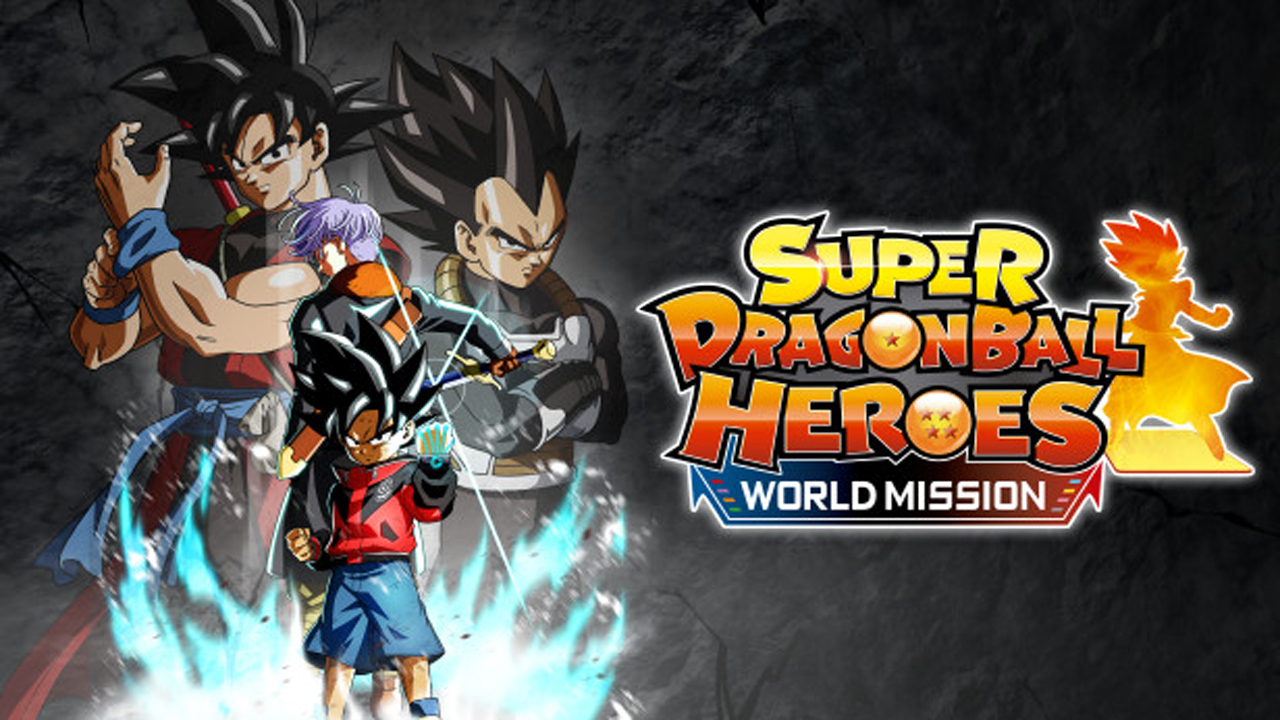Released in Japanese back in November of 2010, Dragonball Heroes has become a rather popular series of card-based tiles in the arcades. Spawning numerous updates and a quasi-sequel title with Super Dragonball Heroes, it has always been a game I’ve admired from afar, as they aren’t games that have previously been localized in the west. Now, at long last, the release of Super Dragonball Heroes: World Mission on the Nintendo Switch gives English-speaking fans a chance to see what this series has to offer.
Nowadays, when people mention a trading card-based game, thoughts tend to go to card games such as Magic, Hearthstone, or Gwent. Heroes is like none of those. In place of a 40+ card deck, you instead have seven unique characters that form a team that can be made up of any of the 1,000+ cards, and that doesn’t take into account the custom cards you can make yourself (more on this later on). It would be a slight understatement to say that this game can be a bit daunting when you first boot it up and start playing, but I’ll break down down the basics so you have a gist of the gameplay.

Each card fits into one of three card types: Elite who are good at energy blasts and reducing an opponent’s characters stamina, Heroes who are well-rounded fighters and tankier, and Berserkers who are heavy physical damage dealers but lack stamina and get stunned quickly.
Along with the character’s type, each card has health, stamina, power level stats, and a special attack. From there, each card can also have access to a wide variety of triggered abilities that can do all manner of different effects such as giving you additional attacks, letting a card transform into a stronger form (a Goku card turning Super Saiyan for example), restoring life or stamina for your team, or debuffing enemy cards. Some abilities allow multiple characters to team up for even more bonuses or special attacks, so long as the conditions are met. The sheer amount of things you can take into account and look at when building your seven-man-team can make your head spin.
So once you’ve put together your team and you start a match, games take place over the course of five rounds. At the start, each character will place their characters in either two areas, the attack area which is composed of three rows and a support area where characters can rest and recover stamina but won’t be able to block attacks or take part in the battle. In the attack area, the further front the row gets, the more damage your characters will do, the more power level they will generate, and the more stamina it takes out of them. Whichever team has the higher power level will get to go first, and any characters that run out of stamina will not be able to block and will take double the damage.
Once both teams have assigned placed their teams, combat starts and the clashes begin. The action takes place in front of you as 3D representations of your team shoot beams, punch and dodge enemy attacks in typical Dragonball fashion, resulting in clashes. During these clashes, both players will have to make a bar stop and whomever’s bar is filled higher will win the clash. If the attacker wins, the characters who are able to will use their special moves and if defense wins, the damage is reduced. Sprinkled throughout these phases, abilities will trigger and things will happen, and for a while, after you first start up this game, there is a good chance you will have no idea what is happening or why. This is normal. I was right there with you.
If everything I’ve told you so far has been hard to follow, I regretfully have to tell you, the game doesn’t do much better in explaining things. This is where we get to one of my two biggest issues with the game. This game does a very poor job at explaining what the hell is going on. There are a handful of “training” missions you have access to, but I found the help they provided to be negligible. I was left with the distinct impression that the training was geared for an audience that has had these games available to them for the past decade in the arcades, and was to serve as a refresher, not a full-blown explanation. While I am going on nothing more than a hunch, I think Bandai Namco of America realized this as well and is why the released a set of five tutorial videos on how to play the game.
My second main complaint is there isn’t a quick way to see what a card does or look at its abilities during a match. In single player offline games, you have to press start, select decklist, go into that menu, and then one by one look at a card and then toggle between each until you get to the ability you want to check out. I’m not sure if this is even possible to do in online matches, as phases have a time limit associated with them. What I wouldn’t give to have the ability to just highlight a card, press a button, and have the cards stats and abilities just be presented to me as an overlay that I can look at. Without having such a feature, it forces players to have a deep knowledge of each of the cards they are currently running. While fine for longtime players, for newcomers or people that just want to try out a combination, it borders on infuriating.
Through trial and error and match-after-match of practice, mechanics clicked, and I started understanding my roster and how to optimize each other’s strengths. The Sparking modes, God Kamehameha modes, Transformation requirements, all of it, I began to understand. The more I figured out the systems, the more that I like this game! I wanted to dig more and more into the giant pile of content that I got with this game, and boy-howdy is there a lot.

As mentioned earlier, there are over 1,000 cards you are able to collect in this game to create your roster from, spanning show favorites, brand new Heroes-exclusive characters, and new forms of old favorites that haven’t been seen anywhere else. Ever wonder what an adult Gotenks would look like, well you can get him here. What about Super Saiyan 4 Broly or Bardock? Yep, they’re here too. The list goes on and on.
By using Gatcha tickets in the game’s shop area, you pull cards at random to add to your library. No real-world money microtransactions here either! In a game that could have been rife with microtransactions, it is a breath of fresh air that they are nowhere to be seen.
You need modes to use your cards and in Heroes, we have a story mode, arcade mode (that takes you through the story arcs released in the arcades in Japan), and online battle modes. All of these modes reward your wins with tickets, accessories, and money that you can use to get new cards, enhance cards for offline play, and buy various items at the various shops.
One of the coolest features in the game is that developer DIMPS has given players is the ability to create their own unique cards, and use them in the single player game modes. By using basically a sticker system you combine various effect, background, and character layers to create your all-powerful and all your card. It’s a system you can really sink your teeth into, and create cards that look just as good as the real things.
Online matches worked extremely well for me, playing both in handheld mode and docked with a hardline connection. The aspect of play that would be most affected by poor connections and lag would be in winning the clashes, and I never felt as though lag lost me a clash. You will see some of the same cards popping up over and over if they are good, but there is still a lot of variety in the makeup of players cards. Getting to see all the interesting variations of characters is part of the fun of this game.
This is a game that asks a lot of a player when you first start. The steep learning curve will no doubt push some players away, made none easier by the lackluster help you get in the game. But it’s in your interest to break through that wall, because once you do, you’ll find a strategic and addictive game that will be great to play against friends. With matches only lasting a few minutes, it’s a perfect game to get a few matches in while on the train or at lunch too.






